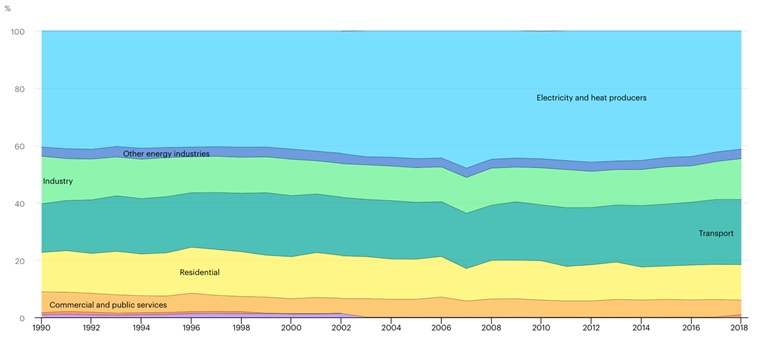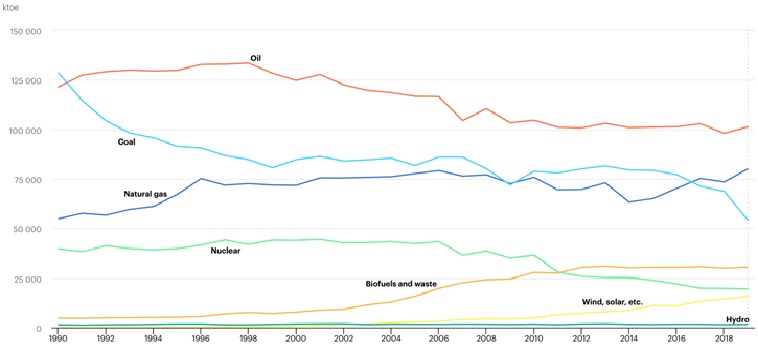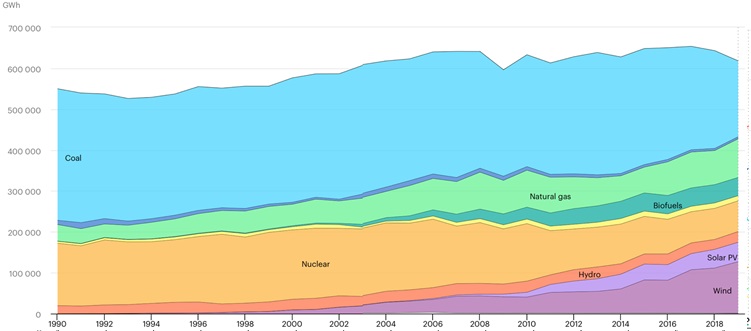Leading contributors of carbon dioxide emissions in Germany
INTRODUCTION
It is no longer news that climate change and global warming is fast becoming a global phenomenon for concern and immediate attention (Corwin, 2021; Xi et al., 2021). The gradual warming of the planet is as a result of the earth’s heat radiation trapped within its atmosphere. According to Herndon (2020), this trapped heat is a consequence of gas emissions that produce a greenhouse effect (i.e., retaining heat within a confined space). Hence these gases were termed greenhouse gases, they include carbon dioxide, methane, nitrous oxide, as well as fluorinated gases (US EPA, 2021). Different regions have started experiencing higher sea levels, warming oceans, more intense heat waves, droughts, and storms, significant year-by-year temperature variances and melting glaciers (World Wildlife Fund, n.d.). At this rate, scientists expect these impacts to result in loss of livelihoods, properties and in more severe regions, loss of lives. Country governments and leaders of corporate organisations have now come together to agree on a way forward, salvaging the damage done from decades of greenhouse gas emissions, while improving civilisation and industrialisation without having a negative impact on the environment, the COP26 is one of many international platforms that foster environmental sustainability and sustainable development (United Nations Climate Change, 2021).
With strong connections to greenhouse gas emissions, researchers have acknowledged the substances that drive climate change (Ledley et al., 1999; Bhattacharyya, Munda and Dash, 2020). Of the different greenhouse gases produced by humans, the Intergovernmental Panel on Climate Change has identified carbon dioxide (CO2) as the most potent contributor to global warming (IPCC, 2007). This paper evaluates Germany’s CO2 emission levels over the last three decades, with an interest in the leading contributors to the nation’s CO2 levels. This paper concludes with recommendations to improve the decarbonisation of Germany’s economy.
DISCUSSION
As at 2018, Germany was responsible for about 2% of global CO2 emissions (IEA, 2021). In 2019, the country reduced its total CO2 emissions to 659.1 metric tonne (ibid). As a national government, Germany is one of the countries that have set very ambitious CO2 emission reduction targets. In May 2021, the German Chancellor, Angela Merkel, signed off on the new targets; to reduce emissions by 65% by 2030 with respect to 1990 levels, overriding the initial 55% reduction target (Reuters, 2021).
The plot below shows the percentage split of CO2 emissions in terms of broad sectors in Germany. It can be observed that electricity and heat production is the highest contributors of emissions, with about 40% of Germany’s total emissions (IEA, 2021). The next highest contributor is the transport sector, responsible for about 20% of Germany’s total emissions.

Figure 1: Germany’s CO2 emissions by sector, 1990 – 2018 (IEA, 2021)
Germany has a diverse energy generation mix, comprising of fossil fuel, renewable and nuclear power generation technologies. Figure 2 shows the trend in the country’s different energy supply sources. Coal and oil were the significant sources of energy about three decades ago, with natural gas serving as a supplementary energy source. Since 1990, Germany’s energy reliance on fossil fuel has reduced over the last three decades; energy supplied from coal has reduced by about 57%, while oil has reduced by about 16% in the same period, however, supply from natural gas in 2019 was 146% of 1990 levels (IEA, 2021). Germany’s reliance on fossil fuel is set to reduce further, as the nation is in the process of shutting down over 100 coal-fired powerplants spread across the country by 2038, amounting to a total of 1.5 gigawatts in installed capacity (Mining.com, 2021). Figure 2 also gives an idea of the little contribution of wind, solar and hydro power towards Germany’s energy supply mix, with the contribution from nuclear power gradually dropping since 2010.

Figure 2: Germany’s total energy supply (TES) by source, 1990 – 2019 (IEA, 2021)
With electricity and heat being the highest contributing sector to Germany’s CO2 emissions, a deep dive was done into the breakdown of electricity and heat generation sources. The breakdown can be seen in figures 3 and 4.
Our Advantages
Quality Work
Unlimited Revisions
Affordable Pricing
24/7 Support
Fast Delivery
